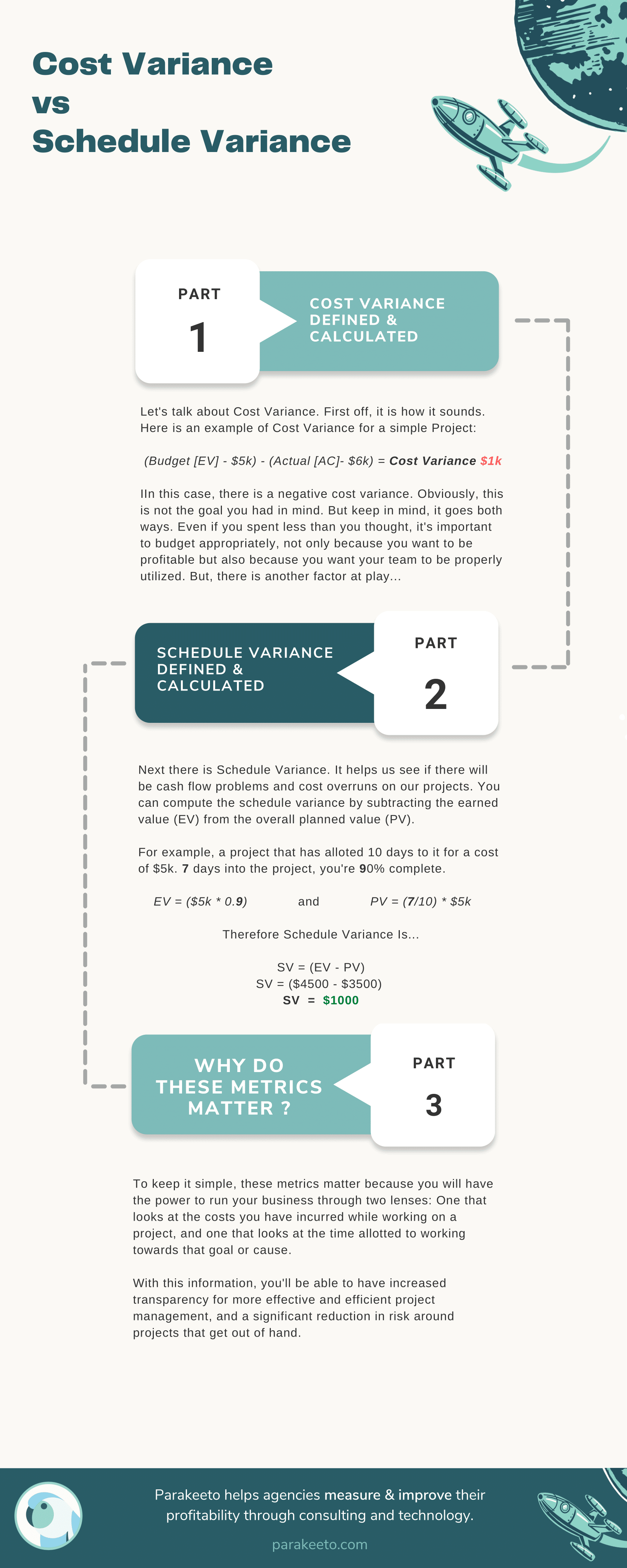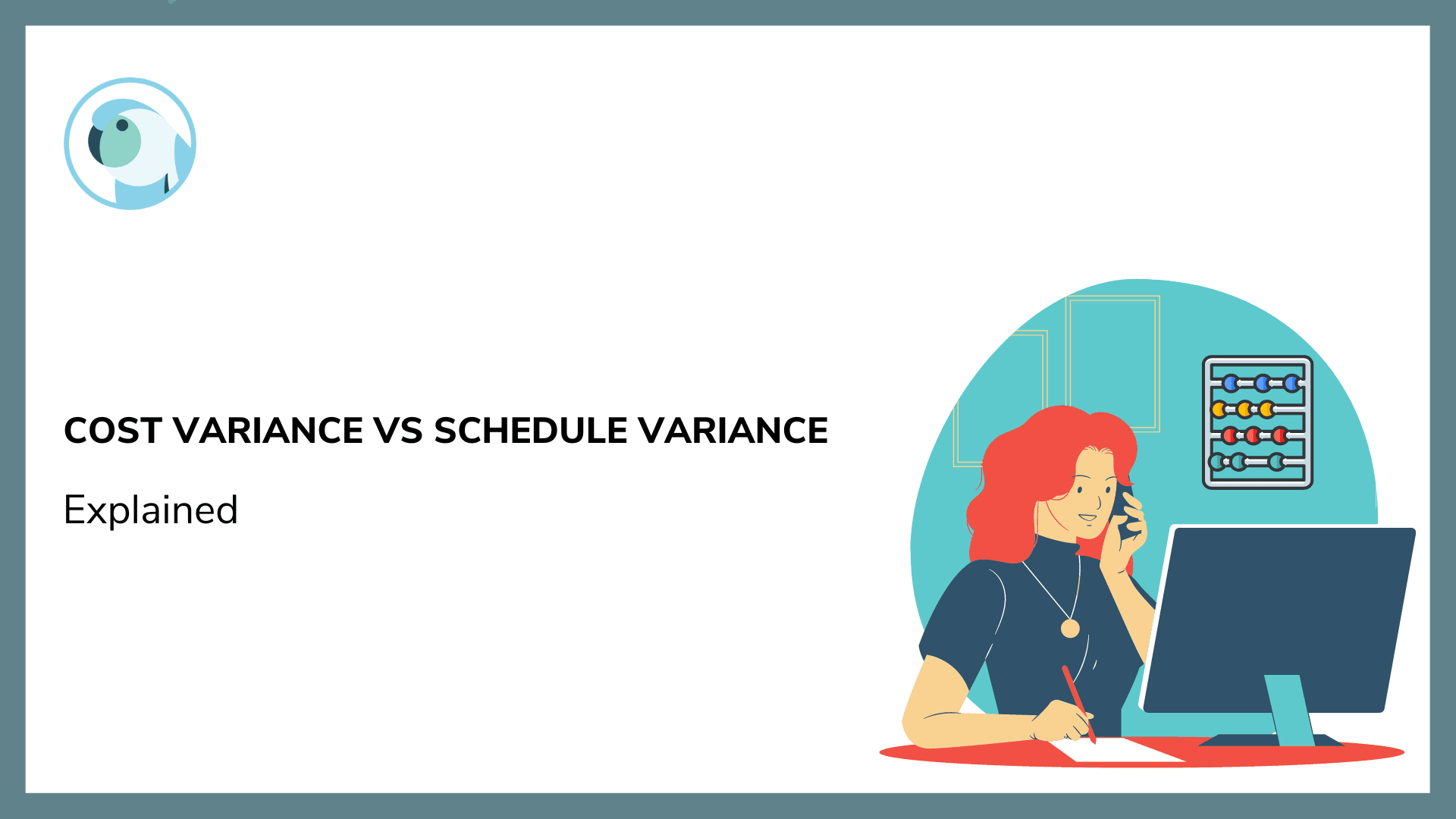Anyone who dreams of having it big in any field must not forget that project budget should always be a priority. Every aspect of finance一from basic management, goal setting, determining investment value, up to your main financial objectives一must constantly be kept in mind. A competent financial literacy is even more critical when you’re just launching a business. One of the basic lessons that you need to familiarize yourself with is the difference between cost variance and schedule variance.
Application of such knowledge will definitely come in handy while facing undertakings such as your risk management processes and goal settings.
Why Should You Know the Difference between Cost Variance and Schedule Variance?
Knowing the difference between cost variance and schedule variance will help you in how you plan out your time and budget for your projects or business. Are you on schedule in finishing your target? Were you able to stick to a planned budget or have already exceeded it?
Asking these questions and keeping these factors on track can help identify your areas of strength and improvement.
This also allows you or your company to maintain and strengthen what generates profit and lends itself well to the overall success of your project.

An Example for Agency Owners
For example, even the smallest changes in the increase of materials, or a big decision such as hiring an additional employee or a part-time consultant, can impact how your budget will run over the development of a project and its deadline.
Evaluation and analysis of these two factors will therefore aid you as you make decisions. Monitoring them is critical.
Read on to know more about the differences between the two, explained below.

Cost Variance, Defined
In reality, a lot of things can happen when handling a business project. It is possible that you can find yourself incurring more costs than what you have budgeted. This is where cost variance will play a crucial role.
Cost variance is computed through the formula CV = EV – AC. One needs to get the difference between the Earned Value and the Actual Costs to measure project success.
The Three methods for Cost Variance
The same formula is used through three methods, namely (1) point-in-time cost variance, (2) cumulative variance and (3) variance at completion.
Earned value
The first type looks at the earned value, which pertains to how valuable work actually performed is.
Budget used
The second type considers just how much of a project’s budget was used only up to a given point in time.
Budget from start to finish
Lastly, the third type looks into the overall budget right from the start-up until its end – compared to the budget allocated, mostly used for future preparations.
Project Managers Tip
An important tip is for project managers to give some leeway in budget planning, no matter how sound the budgeting is. Some factors can be hard to control such as spikes or shortages in supply pricing, fluctuations in currency changes, and costs in labor.

Cost Variance, Exemplified
Here is an example of cost variance at work.
Consider that you manage a school that had to have some classroom repairs.
- The budget amount for the classroom repair was $8000, but the actual repairs expenses were $9500.
- This leads to a cost variance of $1500.
- Because the actual cost exceeds the amount budgeted, this is an unfavorable cost variance.
To keep things within your budget, the actual cost should be less than your budgeted amount.
What matters, too, is how you look into what led to the cost variance of $1500. You could check the quantities of the materials procured for your classroom repaired vis-a-vis the price of the materials. This can help you make decisions moving forward about handling your money.
Luckily, another factor comes into play that can somehow level the playing field. That would be schedule variance.
Side note: our Agency Profit Toolkit is a one stop shop for you to be able to outline some of these crucial profitability numbers to a potential buyer. Spreadsheets, templates and training videos, you name it, it’s all in the toolkit. Grab yours free at the link below:
Schedule Variance, Defined
Everyone loves a tight and well-planned schedule. One needs to recognize that for every delay, there is an undesirable effect.
In the world of business, schedule variance helps one see if there will be cash flow problems and cost overruns. You can compute the schedule variance by subtracting the earned value (EV) from the overall planned value (PV). Keeping these on track will prevent you from adding resources and working overtime.
Additionally, schedule variance analysis also inhibits the possibility of having debts, considering that most business transactions also involve contracts.
If you do not follow your budget within a given schedule – say, you failed to give a third-party consultant the agreed-upon amount only within their committed timeframe to fulfill a collaboration with you -it is highly likely you might be looking at a lawsuit in the future for being unable to deliver your obligation.
Ultimately, make sure that your budget is planned within a given schedule. You can also use what is called a schedule performance index. It is computed by dividing your total earned value over your planned value. You will know that your project is progressing well or going on as planned if the result is greater or equal than one.

Schedule Variance, Illustrated
To illustrate how to schedule variance analysis is done, below is a sample scenario. To help simplify it, let’s break it down into steps.
Know all the factors involved.
Consider the hypothetical situation that you manage a school, and you need to have one of your classrooms repaired. You have allotted 10 working days for this project, budgeted at $5000.
Identify the Earned Value (EV)
In this scenario, let’s say that the work is 90% done for your mini-library by Day 7. You need to find out the earned value by multiplying the actual work completed and the total budgeted cost ($5000). The earned value would be $4500.
Compute for the Planned Value (PV)
Another factor to look into is that by Day 7, the project should be 70% done (divide 7 out of a total of 10 working days). Multiply the amount budgeted ($5000), and you get $3500.
Get the Schedule Variance
We recall that the formula for Schedule Variance is Earned Value (EV) – Planned Value (PV). For the mini-library, $4500 – $3500 yields a total of $1000.
This is a good sign because it is a positive number, and it means that you completed this worth of the work than what had been initially planned.
Use the Schedule Performance Index to Check
SPI in project management is calculated by dividing the earned value by the planned value. In this same scenario, dividing 4500 by 3500 leads to a total of 1.29. This is greater than one, which shows that the project is going well against the schedule. The team in charge of your classroom repair is also able to do work worth 1.29 hours for every hour.

The Bottom Line
Simply put, in knowing cost and schedule variance, you will have the power to run your business through two lenses: One that looks at the costs you have incurred while working on a project, and one that looks at the time allotted to working towards that goal or cause.

Transparency for Better Project Management
Effective application of these two variances will secure transparency in costs that otherwise could have been hidden and could have deterred you from preparing well.
Better Risk Management & Long-Term Plans
Lastly, they will also come in handy in other aspects of business management, such as risk management planning, achieving long-term plans, and managing short-term financial goals.
With this knowledge, we hope you can keep the costs in line and find solutions that are on track and apt!
Infographic

Cost Variance vs Schedule Variance FAQs
ㅤ
Benchmarks will vary from one industry to another, but a general rule of thumb is to aim for a variance of less than 10%
ㅤ
ㅤ
Schedule variance tends to be important in projects where the deadline is very inelastic. It helps organizations see projects that are at risk of missing a deadline early on so they have an opportunity to get things back on track.
ㅤ
Cost variance = earned value – actual cost
You may come across more technical terms to describe Earned Value & Actual cost like Budgeted Cost of Work Performed and Actual Cost of Work Performed, which would make the formula look like:
Cost variance = budgeted cost of work performed (BCWP) – actual cost of work performed (ACWP)
ㅤ
ㅤ
In the context of professional services and agency work – cost variance analysis is a form of forecasting which uses the variance in cost at a moment in time during a project’s lifecycle to try and predict how far above or below the originally estimated cost the project will end up.
ㅤ





Nice article, good job! 🙂